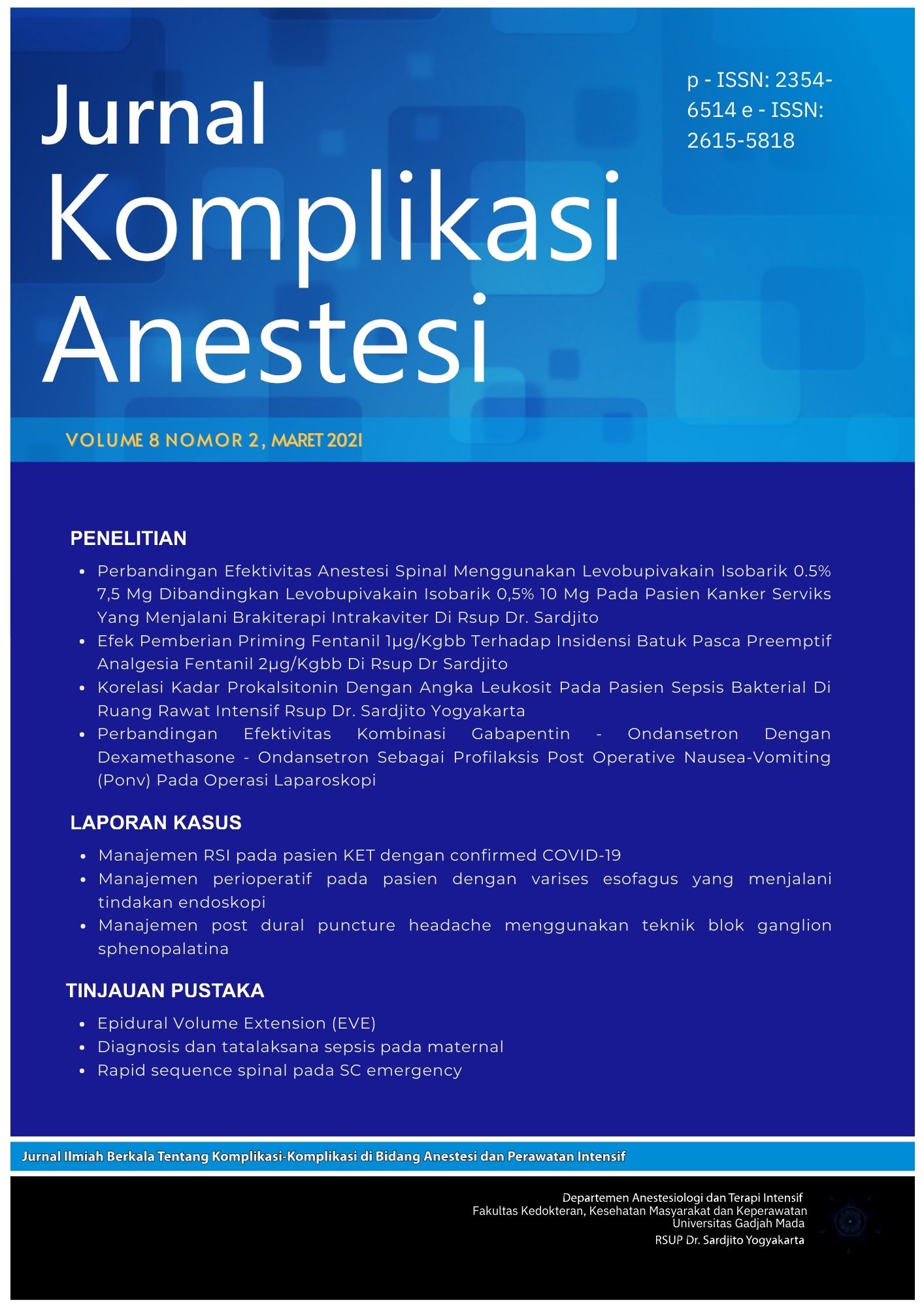Rapid Sequence Spinal pada Seksio Sesarea Emergensi
Abstract
Obstetric emergencies are a challenge both for the obstetrician and the anesthesiologist. The incidence of caesarean sections as per the National Family Health Survey published in 2015–16 was 17.2%. In 7.6% of cases, the decision to conduct a caesarean section was taken after the onset of labour pain. Caesarean sections are classified depending on the urgency into four categories. The target decision to delivery interval for category 1 caesarean section is less than 30 min. The management of these emergencies involves a rapid assessment with minimal investigations. Although general anaesthesia is considered to have higher morbidity and mortality, category 1 caesarean sections may still warrant this technique. Rapid sequence spinal anaesthesia is replacing general anaesthesia for category 1 SC emergency. In category 2 and 3 caesarean sections, spinal anaesthesia still remains the technique of choice
Copyright (c) 2021 Bowo Adiyanto, Untung Widodo, Arif Setyo Wibowo

This work is licensed under a Creative Commons Attribution-NonCommercial-ShareAlike 4.0 International License.
The Contributor and the company/institution agree that all copies of the Final Published
Version or any part thereof distributed or posted by them in print or electronic format as permitted herein will include the notice of copyright as stipulated in the Journal and a full citation to the Journal.

















